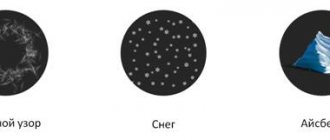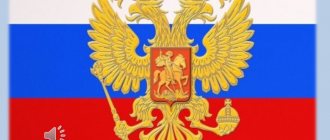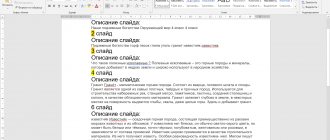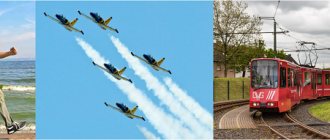Physics lesson notes with presentation, 8th grade. Evaporation and condensation
Methodological development of a physics lesson in the 8th grade
Description of work: this lesson development will be useful for physics teachers working in a general education institution according to the Federal State Educational Standard. The lesson is intended for 8th grade students studying according to the textbook by A.V. Peryshkin. Lesson objectives: Explain the phenomena of evaporation and condensation, find out the conditions on which these processes depend. Objectives: Educational
– to study the physical processes of the transition of a substance from a liquid to a gaseous state and vice versa;
determine the influence of external factors on the rate of evaporation, explain these processes based on MCT. Developmental
: promote the development of the ability to analyze, put forward hypotheses, assumptions, observe and experiment;
promote the development of logical thinking; development of the ability to express in speech the results of one’s own mental activity. Educational
: to promote the development of methods of physical, spiritual and intellectual self-development of students, through communication skills, work in groups;
foster a culture of mental work; develop personal qualities. Formed UUD: subject:
learn to explain the nature of evaporation and condensation;
apply knowledge about the processes of evaporation and condensation to explain the phenomena of the surrounding world; apply theoretical knowledge in practice, report the results of your research, answer questions briefly and clearly. meta-subject:
master the skills of independently acquiring knowledge about evaporation, saturated and unsaturated steam, energy absorption during evaporation, energy release during steam condensation, goal setting, planning;
obtain missing information using a textbook; work in groups. personal:
the formation of a holistic worldview that corresponds to the modern level of development of science and social practice;
develop a respectful attitude towards each other and towards the teacher; stimulate the use of experimental research method in the study of evaporation phenomena. Lesson type: lesson on learning new material. Equipment: laboratory glasses (8 pcs.), pipettes (4 pcs.), containers with alcohol and water, napkins, a glass of hot water, presentation, computer, screen, projector. Lesson format: Frontal, individual, group, work with a textbook, workbook, physical experiment. Literature: 1) Textbook: A.V. Peryshkin. Physics 8th grade, ed. “Bustard”, Moscow-2009. 2) Author’s program by E.M. Gutnik, A.V.Peryshkin “Physics” grades 7-9, Moscow, “Bustard” - 2009 3) A.E. Maron, E.A. Maron “Physics 8”, "Bustard" - 2006 Didactic materials. 4) Collection of problems in physics grades 7-9. Compiled by V.I. Lukashik-M.: “Enlightenment” - 2003. 5) Physics. Workbook. 8th grade authors T.A. Khannanova, N.K. Khannanov Moscow Bustard - 2020 Lesson plan 1. Organizational moment - 1 min. 2. Updating knowledge – 5 min. 3. Goal setting – 5 min. 4. Studying the material – 22 min. 5. Primary consolidation – 7 min. 6. Reflection on learning activities – 3 min. 7. Homework – 2 min.
DURING THE CLASSES.
1.
Organizational moment. (1-2 min.) 2. Updating knowledge. (5 min.) Let's remember the material we studied earlier. (slide No. 1) What do all substances consist of? (substances consist of molecules) In what states of aggregation can a substance exist? (in gaseous, liquid and solid). When transitioning from one state of aggregation to another, do the molecules of the substance themselves change? (No). When a substance transitions from one state of aggregation to another, what happens to the molecules of the substance? (the speed of movement of molecules, the forces of their interaction and the relative arrangement of molecules changes). How much energy do molecules have due to their motion? (kinetic). What energy do molecules have due to interaction? (potential). 3. Goal setting (5 min.). (slide No. 2) Substances come in three states of aggregation. What is the process of transition of a substance from solid to liquid called? (melting) What is the process of transition of a substance from liquid to solid called? (crystallization) Do you think the process of transition of a substance from liquid to gaseous state and back is possible? (Yes) What will these processes be called (vaporization and condensation) Today we will look at one of the types of vaporization. Listen to the poem: (slide No. 3) In the lower reaches, water evaporates and clouds of fog form.
They rise higher until they turn into clouds. And the clouds, floating above us, pour rain and sprinkle snow. What are the phenomena called?
What will be the topic of the lesson? Students formulate: the topic of the lesson: “Evaporation and condensation.” (slide No. 4) purpose of the lesson. Study the phenomena of evaporation and condensation. 4. Study of the material (22 min.) Based on knowledge about the molecular nature of thermal phenomena, consider a model of evaporation phenomena. (slide No. 5) Find the definition of evaporation in textbooks. Evaporation is the phenomenon of the transformation of a liquid into vapor occurring from its surface.
(The definition is written in the notebook).
Let's find out what the evaporation process depends on. Work in groups (4 groups). 1 group.
Place a drop of water on one piece of glass and alcohol on the other.
Compare the evaporation time of water and alcohol. Draw a conclusion on what determines the rate of evaporation of liquid? (slide No. 6) Group 2.
Place one drop of alcohol on two pieces of glass.
Place one glass on top of a glass of hot water. Compare the evaporation time of alcohol droplets. Conclude what determines the rate of evaporation of liquid? (slide No. 6) Group 3.
Place a drop of alcohol on two glasses.
Smear one of the drops on the glass. Compare the evaporation time of alcohol droplets. Conclude what determines the rate of evaporation of liquid? (slide No. 7) Group 4.
Place a drop of alcohol on two glasses.
Blow on one of the drops. Compare the evaporation time of the alcohol. Conclude what determines the rate of evaporation of liquid? (slide No. 7) So, what does the rate of evaporation of liquid depend on? Students put forward their hypotheses. After the speakers of each group speak, the answers are written down in notebooks. The rate of evaporation depends on: 1. The type of liquid. 2. Liquid surface area 3. Temperature. 4. Presence of wind. Let's consider the molecular model of condensation. (slide No. 8) Let's see what happens in a closed vessel. (slide No. 9) This state is called dynamic equilibrium. Find the definition of dynamic equilibrium in your textbook. Dynamic equilibrium is when the number of molecules leaving a liquid per unit time is equal to the number of molecules returning back.
Find the definition of saturated steam in your textbook and write it down in your notebook.
Vapor that is in dynamic equilibrium with its liquid is called saturated. Primary consolidation (7-8 min.) Complete task 16.1 page 33 and 17.4 page 35 in the workbook. Let's check the results of the task. (slide No. 10) (slide No. 11) Where in nature have you encountered the phenomenon of condensation? Slide No. 12 Slide No. 13 shows the processes of condensation and evaporation. Remember what this phenomenon is called in nature? Using models of the phenomena of evaporation and condensation, try to explain:
Why does a dog breathe with its tongue hanging out in hot weather?
Where will the water cool faster? What is a fan for? (slide No. 14) Coming out of the river on a hot day, you feel cool, this feeling intensifies in windy weather. Explain why this happens (slide No. 15) What weather is best to dry clothes? Wet laundry hung outside in winter freezes. But after a certain time it becomes dry. How can this be explained? Why does laundry dry very slowly when it is folded in a pile? (slide No. 16) Repetition of what has been learned.
(slide No. 17) What does the rate of evaporation depend on?
Why do gasoline and alcohol evaporate quickly? Why does a liquid with a higher temperature evaporate faster? How does evaporation depend on the surface area of the liquid? How does wind affect the rate of evaporation? 6. Reflection. (slide No. 18) Did you like the lesson? What was interesting in the lesson? Have you completed all the tasks? What difficulties did you experience? Was the lesson comfortable? Were you active in class? 7. Homework. (slide No. 19) Everyone §16;
17 read. Optional - Prepare a message “On the practical use of the evaporation process in everyday life and technology” Presentation on the topic: Evaporation and condensation
We recommend watching:
Development of an extracurricular activity in physics, grade 8. Physics lesson plan. Problem solving. (8th grade. Electrostatics) Development of a physics lesson in 8th grade with a presentation. Changes in the aggregate states of matter Development of a physics lesson with presentation, 8th grade. Laboratory work: “Testing the law of reflection”
Similar articles:
Summary of a physics lesson in 8th grade on the topic “Work and power of electric current”



